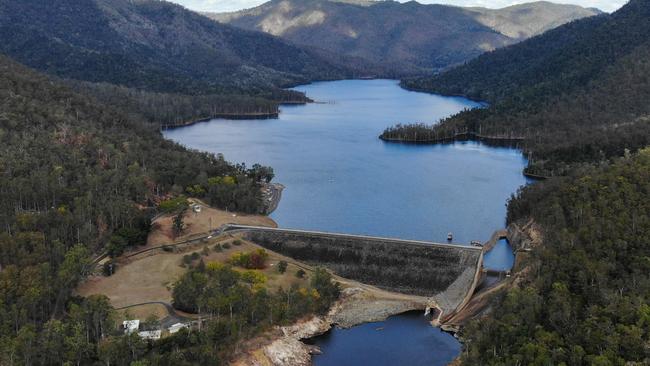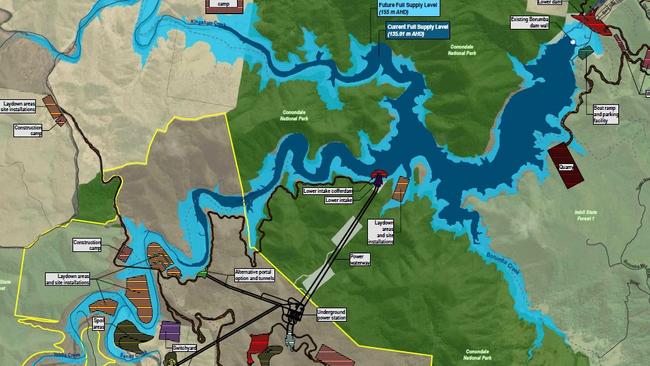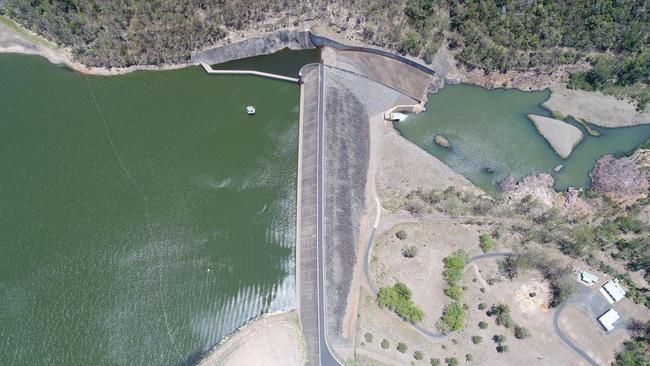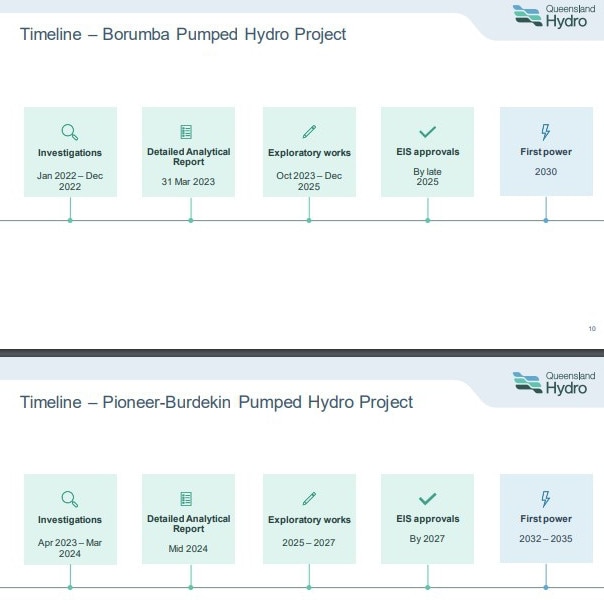$190m awarded in works packages for Borumba pumped hydro
Three major works packages have been awarded for the Borumba Pumped Hydro developments, marking a significant next stage of the the 2000 MW renewable energy project.

Gympie
Don't miss out on the headlines from Gympie. Followed categories will be added to My News.
Three major works packages have been awarded to Queensland-based companies, marking the significant next stage of Borumba Pumped Hydro.
Water2Wire Joint Venture has been appointed as Dams Designer Delivery Partner, with packages totalling $40 million awarded to advance the design and engineering of both the upper and lower reservoirs.
AFRY-Aurecon JV was awarded the $39.9 million Pumped Hydro Energy Storage (PHES) Designer package.
Decmil has been awarded a contract totalling approximately $111M to design and construct two temporary worker camps on the site of the Borumba Project.
All up, nearly $190 million of packages have been awarded by Queensland Hydro, in a major step forward for the 2000 MW renewable energy project, which will provide the long-duration energy storage needed to reliably transition to Queensland’s future clean energy system.

Water2Wire JV will be responsible for leading the engineering and design for the Borumba Project’s seven proposed dams which involve six new dams to form a new upper reservoir, and one new dam wall and spillway immediately downstream from the existing Borumba Dam.
The replacement dam wall will see Lake Borumba increase its capacity providing security to the proposed energy storage scheme.
The PHES Designer package was awarded to AFRY-Aurecon JV. The package will see AFRY-Aurecon advance the front-end engineering design documentation, focusing on the technical elements of the pumped hydro scheme itself – such as the interplay between the turbines, cavern design, tunnel waterway design, and other equipment.
Additionally, a contract totalling approximately $111million to Australian-owned engineering and construction company Decmil to design and construct two temporary workers camps on previously cleared freehold land on the site.

The best practice camps will be able to house up to 336 workers each, with each location containing a wellness room, gym facility, running track, social room, laundry facilities making workers on one of Queensland’s most important infrastructure projects feel right at home.
Initial construction will see two camps built on-site to accommodate the immediate needs of the workforce before the two temporary workers’ accommodation camps will be constructed at the same locations to accommodate workers on the Borumba Project.
This staged approach to delivery ensures impacts on the community can be reduced now and into the future as the workforce grows.
Energy and Clean Economy Jobs Minister Mick de Brenni said on Tuesday the announcement was a huge milestone for one of the most important renewable energy projects anywhere in Australia.
“This major milestone means we have awarded three major works packages to Queensland-based companies to take forward the design of the reservoirs and the powerhouse,” he said.

“We’re bringing together local knowledge and global expertise to deliver what will be a nation-defining project to provide cheaper, cleaner and more secure electricity to all Queenslanders.
“The transition to renewable energy will see millions of dollars in regional development and investment that will support local economies, provide opportunities for community infrastructure advancements and create thousands of jobs for Queenslanders.
Queensland Hydro CEO Kieran Cusack said pumped hydro was “unquestionably the right technology to enable Queensland’s clean energy transition”.
“We’re delighted to be partnering with Australian and international experts with proven global experience that will be used to deliver the Borumba Project. They are aligned with our desire to deliver safe and reliable reservoirs and transformational long-duration pumped hydro assets for Queensland,” she said.
“Queensland Hydro is well aware of the potential disruption a project of this scale could have on small regional communities and we are working with them to ensure we get our plans right .
“In developing our plans, we respect these communities and we are taking the lessons from other projects to ensure we are good neighbours. A big part of this is minimising the impact on housing and roads near where we will operate.
“We want our workforce to be safe today and every day. By housing as many workers as possible in state-of-the-art temporary worker camps on-site, we’ll be reducing the need for workers to occupy homes or other accommodation within the regions and avoid hundreds of vehicle movements each day.
“Minimising potential traffic and housing impacts is the right thing to do for the community and it is also good for our workforce.”
\




